Green Lynx Spiders, A Love Story
In this small meadow-like open space, known only to me and hundreds of other people, is a small goldenbrush weed (right of center in this image, with small yellow blooms topping it).
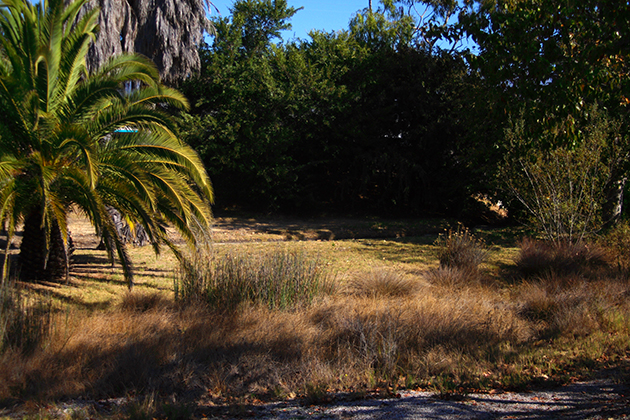
In late August 2013, while ruminating the area for bugs, I noticed three green lynx spiders (Peucetia viridans, one female and two males) on the goldenbrush. They were bright green, about 5/8th inch long. The female is on the left, one of the males on the right.
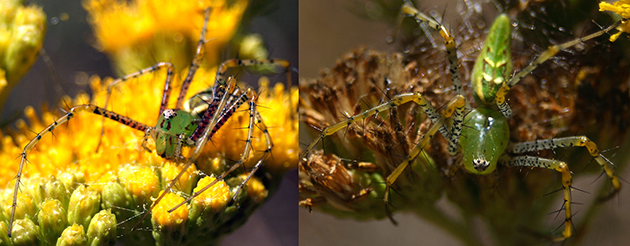
A quick googlification revealed some interesting facts about green lynx spiders: They are common in the south and west. They make no web, instead running and pouncing on prey like cats. They have a painful but non-venomous bite, although the female can spit venom when provoked. They live about a year.
Through late summer and early fall they enjoyed a diet of bees, wasps and hoverflies. This species was studied as a possible candidate for biological pest control, but they eat as many good bugs as bad ones.
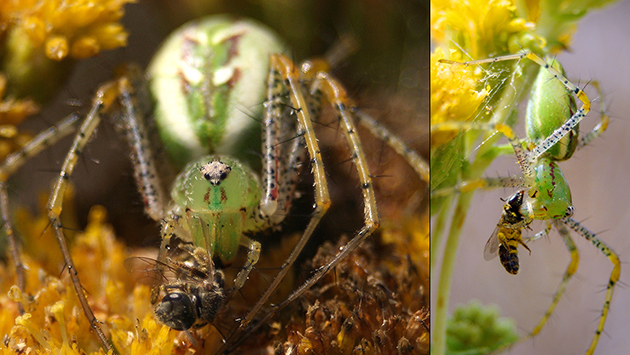
After about two weeks, I noticed the females abdomen became very large, overnight. And one of the males was missing. I could find no references to female lynx's eating their mates. It is written they mate while hanging from silk strands.

About a week later she wove an egg sack. They can contain from 25 to 600 orange eggs, averaging about 200.

The remaining male disappeared about a week later. Meanwhile the egg sack became larger and rounded. Mama Lynx became very defensive of her brood basket.
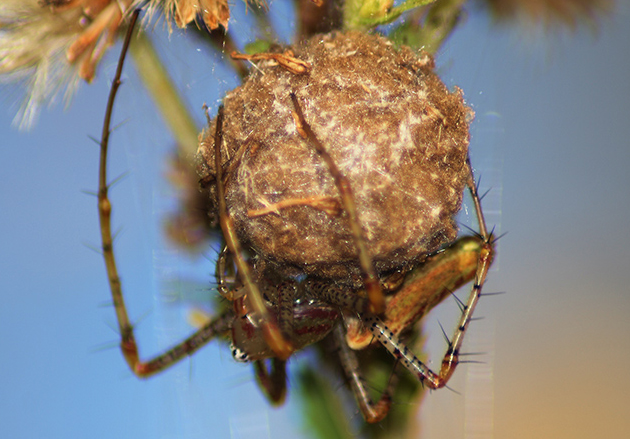
According to folks who have apparently spent time inside a lynx spider egg sack: The babies hatch in about two weeks, remaining in the sack until their first instar (molting). At that time the egg sack will split. In this image the white bumps protruding through the egg sack are the empty shells from that first molt.
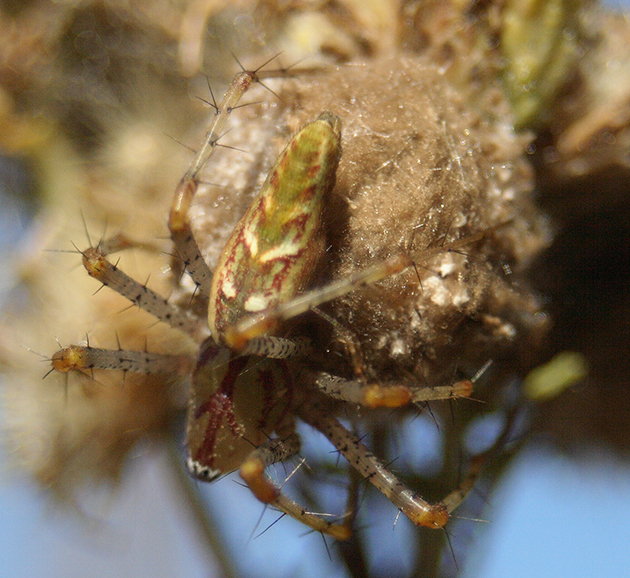
The big day finally arrived. About 200 spiderlings the size of pinheads. Some of them were still molting.

Up close they're just as cute.
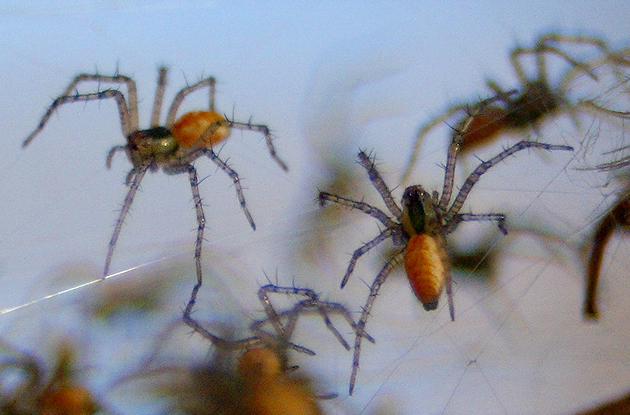
After about 10 days the spiderlings left the egg sack, ballooning away on silk strands in the wind. I missed the event.
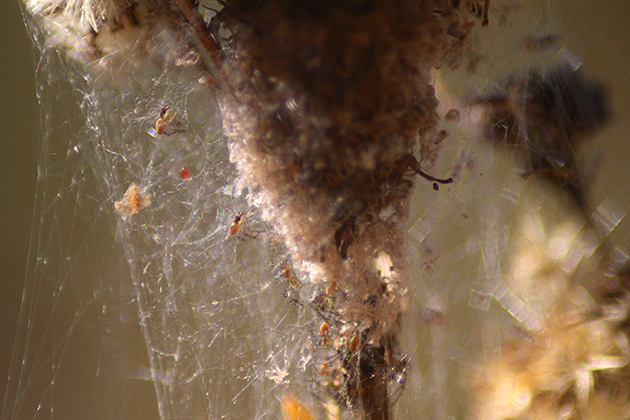
Lynx spiderlings go through eight instars before reaching the maturity needed for world domination.
I've recently noticed another female green lynx on our orange tree on the patio. I've only seen her a few times. Here she is waving her posterior in the air and spraying short strands of silk into the wind. Could this be pheromones?

I'd like to know: If these spiders disperse by randomly riding the wind, chances are two of them will not end up on the same plant, possibly not even within miles of each other. So if a female gets the attention of a male across such a distance (by pheromones or perhaps social networking), how does he get to her?




